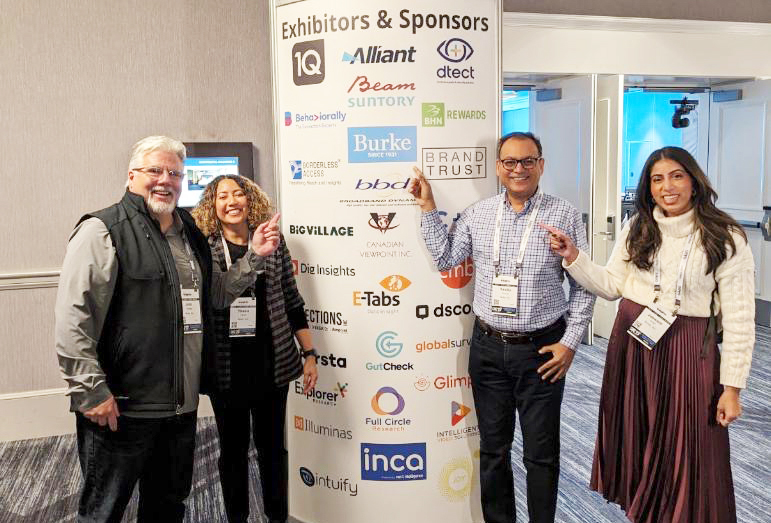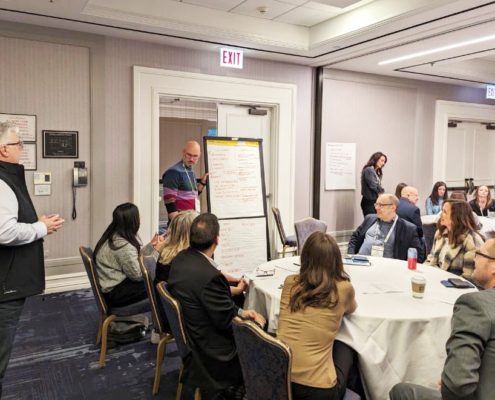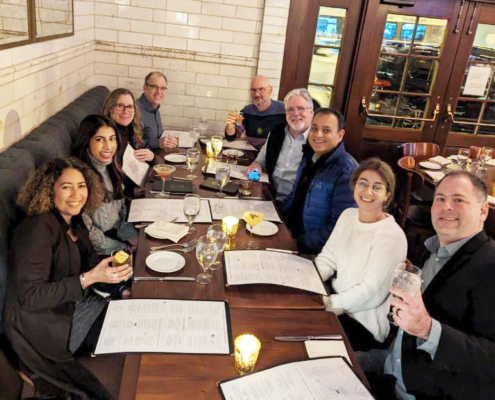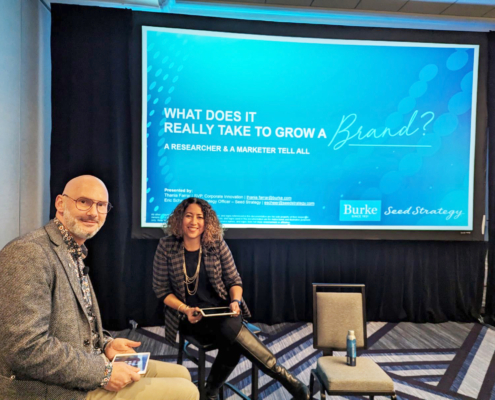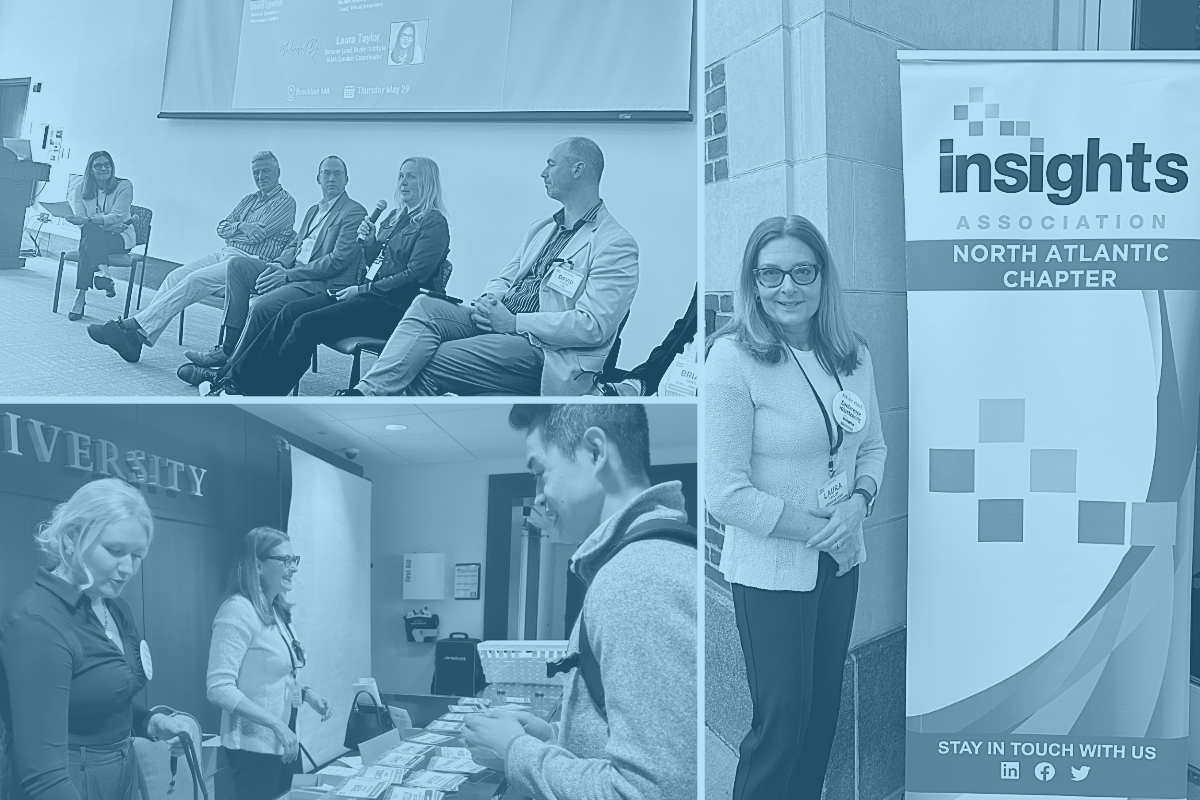
FIVE KEY TAKEAWAYS FROM IA CRC 2023
by Kelsey Schmeckpeper
Last month, our team joined our marketing research and insights peers in Chicago at IA CRC (the Insights Association’s 2023 Corporate Researchers Conference). It was an informative, fun-filled three days during which we attended inspiring presentations, met industry faces old and new, and cheered on Thania Farrar and Eric Scheer as they shared an innovative approach to evaluating a brand’s strength based on two dimensions – Relevance + Momentum!
Here are five of our top IA CRC conference takeaways:
IA CRC Insight #1
DATA QUALITY IS (AND ALWAYS WILL BE) A CONTINUED PRIORITY
With data at the core of what we provide as researchers, it is our entire industry’s responsibility to stay committed to data quality – and this was strongly emphasized at IA CRC. Understanding and reducing the potential for fraudulent data requires clear language on what constitutes fraud, as well as an industry-wide effort to improve the participant experience.
One of the most attended IA CRC presentations highlighted a cross-organizational team – made up of individuals from corporations, sample providers, and research firms – that are working together via the Global Data Quality (DGQ) project. The team has developed new tools to address ongoing and emerging risks to data quality in marketing research. A glossary for consistent data quality and integrity terminology, respondent-friendly survey design questions, sampling technology codes and standards, mobile optimization research, and more are all free of charge and available on the team’s website: GlobalDataQuality.org.
IA CRC Insight #2
ACCESSIBILITY IN RESEARCH MATTERS
Some IA CRC presentations spoke not only to accessibility as a standard benefitting the representativeness of research survey samples but also to multiple examples of how “what’s good for disability inclusion is often good for everyone.” Closed captioning was a resonant example shared; while developed for those with hearing impairments, many without impairments use closed captioning as part of their content viewing experience – to increase focus, to consume content without sound in public spaces, to language learn, and more. In making accessibility a standard research practice, we stand to improve the user experience and research results. It was made clear at IA CRC: inclusive mechanisms in research should be a default, not just “extra.”
DEMOGRAPHICS =/= MONOLITHS
Whether considering Gen Z, Gen Alpha, the LGBTQIA+ community, or others, brands are continually seeking how to connect with demographic groups of interest. However, it can be challenging to figure out how to authentically connect with these groups, let alone understand motivations, barriers, and so on. One roadblock toward successful brand strategy and connection is the tendency to view demographics as monoliths.
At IA CRC, Marc Adams at VICE spoke of this discrepancy, using Gen Z as an example, mentioning that Gen Z research often nets contradictory results. He opined that it is no surprise that contradictions exist when we treat Gen Z as a homogeneous group versus a series of individuals who happen to share the same age band. Adams implored conference attendees to move away from solely thinking in terms of “XYZ demographic,” and instead view every set of respondents as a cluster of various community networks. Community networks are defined by common interests, passions, and unmet needs. It is within these smaller community networks where we can identify the demand space that aligns with a brand’s equity.
IA CRC Insight #4
AI GROWS IN USEFULNESS, AND HUMAN-FIRST INSIGHTS REMAIN INVALUABLE
AI continued to fuel industry conversations at IA CRC, with multiple presentations featuring the topic. From using ChatGPT to better understand a particular category, to leveraging text/video analytics, to AI-assisted moderation for conducting qualitative research at scale, it is clear how AI-based tools can create efficiencies in research. As an industry we must continue to search for more places where AI powers-up our thinking and perspective. Still, as we make use of its practical applications, discussions at IA CRC emphasized the importance of human-centricity in shaping AI-driven insights and combating biases. Our unique perspective and context as humans ultimately “breathe the life” into our research narratives.
IA CRC Insight #5
WE ARE NOT JUST RESEARCHERS; WE ARE STORYTELLERS
One critical part of “reporting life” is illuminating the insights story, beyond “here are the results” basics. Reporting teams are increasingly requested to produce greater and faster insights, but there is also a desire to understand the meaningful “so what” and the consumer emotions behind the numbers. Including clear visual communication and opportunities that highlight the voice of the customer outside of quantitative results – such as with video open-ends or qualitative interviews – are avenues toward delivering on this, as is effectively boiling down 300-page “all results” reports to a more digestible, resonant ten slides of core story.
At IA CRC, writer and producer Emily Goldwyn (of Life & Beth, Emily in Paris, Awkwafina is Nora from Queens, and SMILF) spoke to the importance of storytelling elements. As researchers distill results into the most important insights, we must keep the following questions in mind: what is our” (an elevator pitch), who is at the center of our story, and what is the larger message or theme with which we want to leave our audience? What’s more, researchers should consider why they were selected to tell this story and bring their unique and authentic perspectives to drive greater connection.

As a Senior Analyst, Kelsey immerses herself in the data to identify valuable “ah-ha’s!” and actionable insights for her clients. A storyteller at heart, she weaves individual survey results together into a compelling narrative that helps inform broader business decisions.
Interested in reading more? Check out Kelsey’s other article:
Springing Forward Into a New Normal
As always, you can follow Burke, Inc. on our LinkedIn, Twitter, Facebook and Instagram pages.


